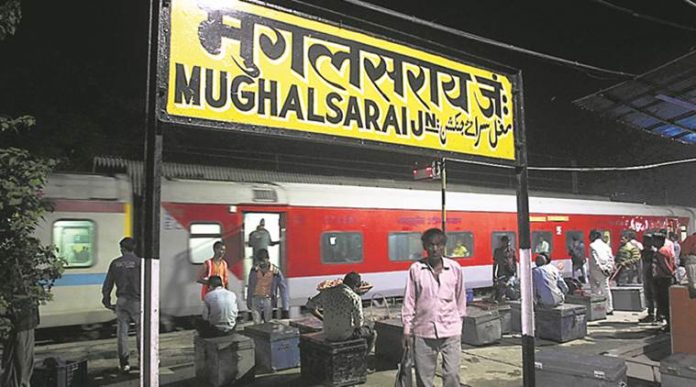This article is written by Amit Garg of National University of Study and Research in Law, Ranchi. This article explains the procedure for renaming a city or state.
India is a vast and diverse country which has a large number of cities, towns, villages, states and union territories. Each place across the globe has a history behind its existence and history of each place fascinates the people to know more about each such city or state. The same set of theory goes for the name of each place. Every city or state has a history of the evolution of its name. There is a great probability that the city in which you live in was called by a different name than the present existing one. Similarly, the evolution of the name of a city or a state is a source of fascination for the many people. The study of names of a state or city or their name’s evolution over a period of time comes within the scope of study of etymology. Etymology in its simplest of meaning refers to the study of the origin of words and the way in which their meanings have changed throughout history.
Purpose
India after gaining independence from the British rule in 1947 found itself deeply clutched with the memories of its former colonial rulers who made a lot of changes in every sphere in order to diminish the identity of the nation whether it was in the form of names or be it physically. In order to free itself from the daunting memories of the colonial rule and to cherish a new identity created by the sacrifice of the millions of people which got the people their independence, India involved itself in a whole lot of series of action where the name of the states or the cities were modified. These changes brought out a sense of commonness and reminded the people of their freedom from the British symbols and relics.
The process of changing the name of cities and states across India was carried out in an irregular pattern. The demand for changing of the name was brought to the notice of the Parliamentarians through violent protests or through a mass campaign. Both ways were successful in gaining the attention of the Legislators.
Indian Legislature laid down broad guidelines for renaming a state or a city. To alter the name of a state or of a city, the central government and the state government has to necessarily follow these guidelines so that the process may be considered as democratically acceptable and it may represent the will of the majority. But the decision so taken on the basis of the view of the majority must not negate the vital role that the minorities play in every democracy.
Standard Procedure
The process of changing the name of a state is entirely different from that of a city. The process of changing the name of a state involves not only the state but it affects the Centre as well. But changing of name of a city involves only the state legislator. In our current discussion, we will deal with the procedure that the Parliamentarians or the State Legislators follow in order to change the name of a State or of a city.
Procedure for Renaming a City
Renaming of a city is a thoughtful task that it given to the State Legislators. To complete the renaming of a state, the State Legislator should follow a guideline that will rule the validity of a particular renaming done by the said authority. The procedure differs from state to state but regulations that need to be followed are –
- The first step involves raising of a request in form of a resolution by any Member of Legislative Assembly (MLA) which proposes the renaming of any particular city or street.
- On the basis of the request of the MLA, the issue would be deliberated upon and the consequences of the same shall be discussed upon. So, the second step involves the deliberation over the request of the renaming of the city or the street.
- The final step involves voting of the validity of the resolution. If there are majority votes in favour of the resolution, the said resolution shall be declared passed. If the majority of votes for a resolution are not achieved, the resolution shall fail. The majority here involves simple majority.
The State Legislation on the basis of the majority view shall make the necessary changes in the name of the state or city public. One example of the renaming of a city is the renaming of the Aurangzeb Road in Lutyens’s Delhi as Dr APJ Abdul Kalam Road. the resolution was raised by BJP MPs Meenakshi Lekhi and Maheish Girri and AAP’s trade wing secretary Vipin Rohilla. The resolution was unanimously passed by the New Delhi Municipal Council (NDMC).
Some of the instances of change in the name of the cities are:

| Old Name | Located In | New Name | Year of Change |
| Suryapur | Gujarat | Surat | 1520 |
| Gauhati | Assam | Guwahati | 1983 |
| Madras | Tamil Nadu | Chennai | 1996 |
| Gurgaon | Haryana | Gurugram | 2016 |
| Mughalsarai Junction | Uttar Pradesh | Pt. Deen Dayal Upadhyay Junction | 2018 |
There are hundreds of such instances where the name of the city or the street has been changed by the State Legislation. Each state follows its own legislation in order to rename a particular city or street within its jurisdiction.
A state assembly is not entitled to change the name of those streets or cities which do not fall within their jurisdiction. Any violation of the jurisdiction by an assembly will lead to the law being declared invalid or void.
Procedure for Renaming a State
One of the most cumbersome task for the Parliament is the procedure that needs to be followed in order to rename a state. The Constitution of India provides for the renaming of a state under Article 3 and Article 4.
The procedure of renaming of the state can be initiated by either the Parliament or the State Legislator and the procedure is as follows:
- A bill for renaming a state may be introduced in the Parliament on the recommendation of the President.
- Before the introduction of the bill, the President shall send the bill to the respective state assembly for expressing their views within a stipulated time. The views of the state assembly are not binding, neither on the President nor on the Parliament. But the process must not be skipped as it is of vital importance as any law so made will be affecting that particular state.
- On the expiry of the period, the bill will be sent to the Parliament for deliberation.
- The bill in order to take the force of a law must be passed by a simple majority.
- The bill is sent for approval to the President.
After the approval of the said bill, the bill becomes a law and the name of the state stands modified.
Some of the instances of change in the name of the states are:
| Old Name | New Name | Year of Change |
| East Punjab | Punjab | 1950 |
| United Province | Uttar Pradesh | 1950 |
| Madras Presidency along with Hyderabad | Andhra Pradesh | 1956 |
| Madhya Bharat | Madhya Pradesh | 1959 |
| Pondicherry | Puducherry | 2006 |
| Uttaranchal | Uttarakhand | 2007 |
There were a large number of changes made in the names of the states in India with the enactment of the Constitution of India. Considering the fact that the Constitution came into force from 26th January 1950, the states re-emerged from the colonial rule into the new post-constitution era by such enactment. In the colonial period, India was divided into princely states (governed by local bodies) and provinces (governed directly by British officials). The states were given new identity by the Constitution of India through the First Schedule. The First Schedule contains the list of all the states and union territories and their territorial extent. The re-emergence of states brought an end to the old provinces and princely states and these new states were created by the State Reorganisation Act, 1956. The states were formed on the basis of language. For e.g.: Travancore-Cochin was renamed as Kerala in the year 1956. Thus, most of the states were renamed after the enactment of the Constitution in the year 1950. There is no need of an amendment as under Article 368 of the Constitution of India for renaming a particular state or union territory or a city or a street. A normal legislation which falls within the meaning of Article 13 will suffice the need of renaming a state or a city.
There are still many proposals for the renaming of states and cities which are pending before the Parliament and the state assemblies of the respective states. Some such pending proposals are:
| Existing Name | Suggested New Name |
| West Bengal | Bangla |
| Kerala | Keralam |
| Allahabad | Prayagraj |
| Bhopal | Bhojpal |
NOTE – The State used in the above discussion also includes Union Territories.
Conclusion
States are the territorial division of a nation’s land. In India, the states are formed on the basis of a law made by the Parliament and the Parliament is vested with the power of renaming such states. There is no need for an amendment to rename a state. The state here also includes Union Territories. The same changes must be made in the First Schedule of the Constitution. The state is further divided into cities and streets. The work of renaming the cities vests with the state assembly. President plays a very vital role in the regulation of activities of the Parliament and the state assembly for the purpose of the renaming of a state or a city.











